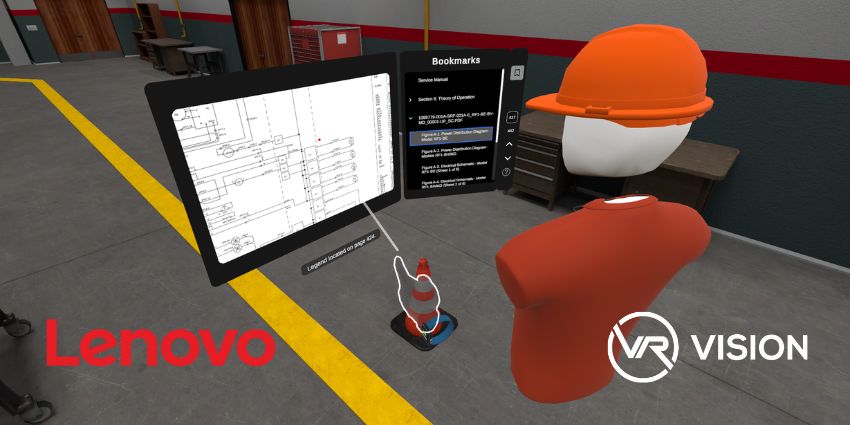A recent independent survey by HTC VIVE, titled “XR Applications in the Financial Industry,” involved around 400 financial services professionals to study the utilization of XR in the sector. The report revealed that approximately 92 per cent of financial professionals have seen a positive return on investment from XR. Additionally, 82 per cent of the respondents believed their firms would integrate XR technology within the next five years.
The report also highlighted that 84 per cent of financial professionals observed a positive impact on their workforce’s skill development through XR integration into training programs, and 80 per cent of them believe that immersive technology enhances general operational efficiency.
Regarding customer experience, 77 per cent of the professionals stated that XR has improved the buyer’s journey. Additionally, 59 per cent of the respondents highlighted that XR’s ability to visualize data in 3D renders can enhance comprehension, decision-making processes, and client interactions.
While the data highlights the financial sector as a budding new opportunity for XR to flourish as workplace technology, the report also highlighted factors that could slow the acceleration of XR in this sector. Namely, how security considerations will play a significant role in how XR accelerates into the financial industry due to the massive amounts of consumer, worker, business, and environmental data that need to be safeguarded.
The financial sector appears to be surging, but with it come new hurdles. Dan O’Brien, HTC VIVE’s President of Americas, recently spoke with XR Today to discuss the latest opportunity for XR solutions to change the financial sector, security hurdles, and the five-year journey which led to XR becoming a tool for finance.
Helping the Financial Sector with Customer Satisfaction, Employee Upskilling, and Decision-Making
“It’s an interesting transition that we’ve made,” O’Brien remarked. The HTC VIVE representative expressed that financial services are an area where the firm thinks “it could make an impact.”
However, a sensitive sector like the financial sector requires deep regulations, security considerations, and compliance; O’Brien noted that “the regulation, security, privacy—it’s very, very complex, especially in the US when you talk to some of the major financial services institutions.”
O’Brien also added:
Whether they have retail banking, commercial banking, investment banking, or advisory banking, all these different areas contain regulatory and compliance matters that are vast. What actually opened things up for us with the financial services was the fact that we’ve actually had so much success with the federal government and the DoD. Working with areas of the military and being able to meet their security criteria that actually opened the door.
According to O’Brien, training and simulation usage is “immediately” jumping out to HTC VIVE and its financial partners as a fruitful integration of XR technology. From training internal employees on processes, methods, procedures, and fraud detection, the sector’s leaders can now “do it much more effectively, the retention is more effective over time, and it’s a lot less expensive overtime to train people”, O’Brien explained.
Moreover, the HTC VIVE representative noted that users in the financial sector can reduce travel and training costs through XR while engaging with repeatable immersive training, which leads to “higher confidence in people and better retention.”
XR training in the financial sector affects an employee’s upskilling, and its usage can also positively impact consumers. O’Brien noted that XR visualisation tools can help customers learn about their financial data. This, combined with employee-facing training, can lead to “better interactions with the actual customers” while also reducing operational costs.
O’Brien explained that immersive data visualizations, whether consumer data visualization or an immersive data presentation for financial advisors and decision-makers, can affect various levels of an organisation, such as highlighting positive or negative trading decisions.
O’Brien also added:
The ability to now be inside an immersive space with others, use voice-activated software to visualize a data set and present it to a group, and have that information rendered in less than 10 seconds or less than a couple of seconds is extremely empowering.
HTC VIVE also noted how AI is present within immersive data workflows, with workers able to ask integrated AI questions such as who the main customers are and how much they are selling. O’Brien noted that AI can produce that report in seconds, allowing business leaders to make real-time decisions, find outliers, find risks, and display that information “in any way, shape or form.”
“I think all of that is extremely empowering for decision-makers, advisors and the people working inside those financial institutions. I think this is a game changer for them,” O’Brien also added.
The Financial Sector: A Bold New XR Market
O’Brien also explained that XR’s influence in the financial sector is new. He stated that “five plus years ago, you couldn’t even remotely come close to approaching this category or vertical,” noting how elements such as device management, security, and data visualization platforms had yet to reach the required considerations at that point.
O’Brien noted that “there were some ideas about it and how to do it, but in reality, there were a lot of hurdles.” However, in previous years, O’Brien explained that immersive technology leaders covering areas such as MDM, security, and visualization made a significant effort to evaluate and approach security standpoints.
O’Brien also added:
In terms of the adoption and bringing it in now, it can be brought in. I think there is a smooth integration because it works with Salesforce, it works with Adobe, it works with Tableau. So you have all of these different tool sets where you can integrate the software pretty seamlessly, and those integrations are less troublesome. They’ll tear apart the software, and they will make sure there are no vulnerabilities because any time a customer’s financial data becomes at risk of a breach, that’s very serious, and they cannot afford those types of errors or vulnerabilities, so there’s a really, really strict process to getting things in.
In recent years, O’Brien noted that XR and related devices or software can pass and meet the sector’s criteria, “but it’s also a matter of getting more financial institutions aware of those opportunities, the cost savings, and the improvements that they can make to their organizations – but it definitely had some barriers to entry over the last couple of years that we’ve been able to reduce or completely remove.”
Security has to “be part of your DNA from day one when you design,” O’Brien said, “whether it’s hardware or software, you have to design for enterprise use differently than you designed for the consumer.”
O’Brien explained that enterprise security is far more sensitive than consumer-based XR services, “When it comes to a corporate entity, a breach could equate to billions of dollars in loss.”
This extends to many factors when XR is in play. For example, when firms leverage an AR headset that device records a workplace and the information contained within it, firms and the VR hardware/software provider must put in place safeguards for the environmental data that a headset is recording or pulling information from; O’Brien expressed that information must be “encrypted” and “protected.”
O’Brien continued:
That’s why cameras are not allowed on trading floors globally. But we could potentially still meet the criteria because we do have that kind of encryption physically in the hardware. A lot of other device manufacturers out there have those cameras as their business model.
Could XR Create New Digital Security Methodologies?
Security concerns may be front and centre and may be a hurdle for financial groups looking to innovate and try XR as a learning and visualisation tool. However, XR technology could assist in advancing security across the board. The technology is more than a head-mounted device; within that hardware exists a trove of integrated systems that could paint a picture of tomorrow’s security technology.
O’Brien noted that the technology could evolve to assist with security and validation. He stated, “There is very much the possibility of having better validation. So if, say, a bank could validate an end user by their eye tracking or biometric data, that would certainly be a layer of security that the financial institution could use.”
“In general, there is a layer that could be implemented for financial services and the banking industry that could help, but again, biometric data that’s extremely sensitive, PII, personal information for end users, and so the banks have to do a good job of now protecting that information,” O’Brien explained.
But XR and any immersive technology should not diverge from a core problem or question that must be solved. In financials for the consumer or a business, “the overwhelming majority of people want just to have their information secure and access their funds,” solving or optimising a task such as that should not be forgotten when implementing XR. Moreover, users in finance or any other sector should avoid using new tech for the sake of it, instead integrating new technology which can serve a purpose and lead to increased internal faith and investment.







